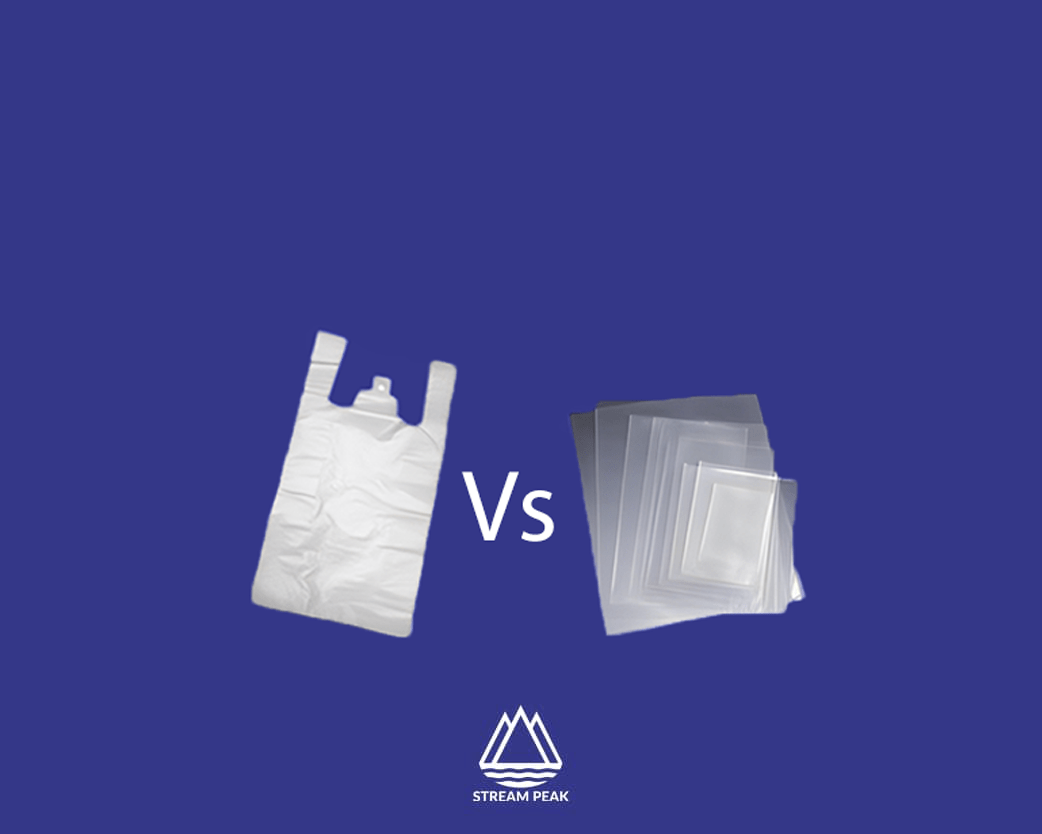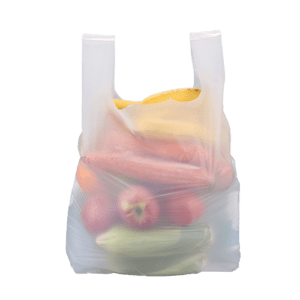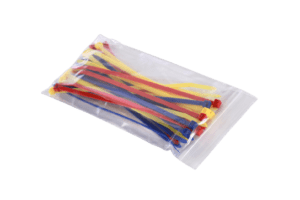HDPE vs LDPE Plastic Bags

Polyethene is a type of plastic widely used for many industrial applications. The material is made up of different grades and types, including high-density polyethene (HDPE) and low-density polyethene (LDPE). There are seven general types of plastic, each comprising a unique combination of resins. A mark of triangular arrows with a number in the middle can identify each plastic.
Both plastic packaging options are affordable, light in weight and can be used with a variety of applications. Classified as thermoplastics, the materials can be recycled to form other products when going through a process of heating to be softened and solidified when cooled. They are also highly resistant to solvents such as chemicals, alcohol and alkalis.
Both have their distinct advantages, making them suitable for different uses.
Key Characteristics of High-Density Polyethylene (HDPE Plastic)
HDPE plastic is an affordable thermoplastic polymer with a linear structure and lesser branching than LDPE, making it more rigid. HDPE has a higher melting point of 135°C compared to LDPE and is produced with pressures ranging from 10 to 80 bar. The plastic is manufactured by utilising two different techniques:
- Slurry Polymerisation – Polymerisation of monomers in the structure of dispersed monomer particles
- Gas-Phase Polymerisation – Polymerisation of monomers in the structure of a vaporised monomer, fluidised catalyst and polymer particles in a fluidised bed reactor
Benefits of HDPE Plastic Bags
High-Density Polyethylene (HDPE) poly bags is a popular choice for grocery shopping, food packaging and lightweight trash. The advantage of HDPE is that it is generally lower in cost compared to LDPE. The material is also more translucent than LDPE because of its thicker branch structure. HDPE plastic, with a resin code of 2, is much easier to recycle than LDPE, which has a resin code of 4.
Key features of HDPE Plastic
- Low-cost and lightweight
- Translucent
- Rigid and durable
- Resistant against alcohols, diluted acids, alkalis
- Resistant to moisture, dust, dirt, oil and grease
- FDA approved
- Recyclable
HDPE plastic is used to produce a wide variety of products, such as grocery bags, flexible packaging material and injection moulded parts.
Low-Density Polyethylene (LDPE Plastic)
LDPE plastic is a soft and flexible polymer with lower density, strength and temperature resistance than HDPE. The popular plastic is produced at high pressure of 1,000 to 3,000 bar and has a lower melting point of 115°C compared to HDPE.
This manufacturing process using blow moulding, injection moulding and extrusion is known as free radical polymerisation. This process involves chain-growth polymerisation, where the polymer chains take shape due to the continuous addition of unsaturated monomer molecules to an active, free radical centre. The molecular structure of LDPE plastic features a higher degree of short and long-side-chain branching than HDPE plastic.
Benefits of LDPE Plastic Bags
Low-density polyethene (LDPE) plastic bag is often used due to their flexibility and stretchability. The material is also more transparent than HDPE because of its denser branch structure. The plastic has excellent processability, able to withstand high impact at low temperatures, has a low water absorption rate, good weather and chemical resistance, and is an excellent electrical insulator.
LDPE plastic bags also have a higher tear/puncture resistance and tensile strength than HDPE, making the packaging ideal for heavy loads such as garbage bags. Its good puncture resistance also prevents tearing and ripping, making it suitable for carrying sharp objects.
Key Features of LDPE Plastic
- Low-cost and lightweight
- Transparent and stretchable
- Resistance to chemicals such as alcohols, dilute acids and alkalis
- Resistant to moisture, dust, dirt, oil and grease
- Excellent electrical insulation
- Recyclable
LDPE Plastic can be made into packaging products such as air pillows, shrink wrap, and stretch film. The material is commonly used in drink cartons, containers, dispensing and beverage bottles, tubing, plastic parts of computer components, moulded laboratory equipment, bottle caps and closures.
Case Study
| Garbage Bags | Grocery Bags | |
| Dimensions |
100MM to 3M Width |
100MM to 3M Width |
| Material |
LDPE |
HDPE |
| Thickness /Density |
40 – 100 microns |
40 – 150 microns |
| Price |
6% higher than HDPE |
6% lower than LDPE |
Conclusion
Being conscious of plastic waste is important when deciding on a plastic bag. HDPE and LDPE plastic bags have significant benefits, but environmental issues must be considered. Biodegradable packaging solutions have improved dramatically over the years and now offer an effective way of reducing our carbon footprint. They break down naturally in the environment and can be an alternative packaging solution to conventional plastic bags.
Learning more about the different biodegradable materials available is crucial in deciding which works best for consumers. With researchers continuing to develop new methods to produce sustainable packaging materials, biodegradable plastics will likely become increasingly common in the near future. Stream Peak offers both LDPE and HDPE Plastic packaging. Contact our packaging engineers to find out more.
Watch the video below to learn more about HPDE vs LDPE bags.



